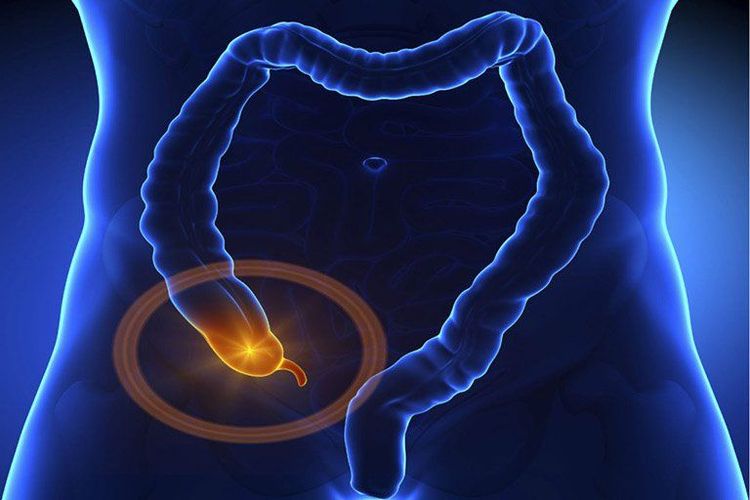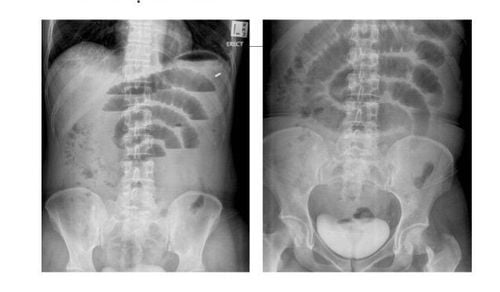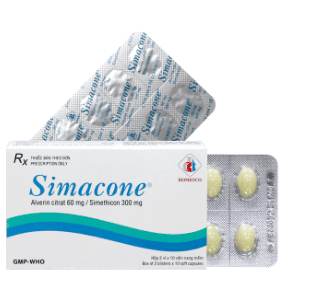This is an automatically translated article.
The article was professionally consulted by Specialist Doctor I Le Nguyen Hong Tram - Gastroenterologist - Department of Medical Examination & Internal Medicine - Vinmec Nha Trang International Hospital
Small bowel obstruction is an uncommon but dangerous disease only after acute appendicitis. Therefore, understanding the disease situation, causes and symptoms will help patients cope and have effective treatment for this disease.
1. What is small bowel obstruction?
Small bowel obstruction is a condition in which the small intestine is blocked by substances in the intestinal lumen that cannot circulate, leading to vomiting, abdominal pain, and constipation. This is one of the most unpredictable dangerous symptoms, especially for babies and young children. If not detected in time, it can lead to intestinal perforation, and leakage of gastric contents into the abdominal cavity, causing the contents of the intestine where many bacteria are present, to spread to the body cavities. The disease then becomes life-threatening.2. Causes of small bowel obstruction
Currently there are many causes of small bowel obstruction such as:
Extra-intestinal causes: Due to adhesions, abdominal wall hernia, intestinal volvulus, intra-abdominal abscess, and hematoma in the abdominal cavity. Intestinal wall: The patient has tumors, stenosis, hematoma in the intestinal wall, intestinal lumen, and inflammatory bowel disease. Causes in the intestinal lumen: Patients have tumors, gallstones, foreign bodies in the intestinal lumen such as food residues and worms.. Signs and symptoms of small bowel obstruction:
When intestinal obstruction, patients often abdominal pain and bloating. The pain is constant, sometimes spasms in the epigastrium or around the navel. When occlusion, the abdomen is often distended, which is due to the reflex of the small intestine. Patients often have vomiting and constipation, defecation. Vomiting is usually delayed, if the vomiting is due to an obstruction in the terminal portion of the small intestine. Constipation, defecation is most obvious when all stools in the bowel below the obstruction are enemas removed. When complete small bowel obstruction is in its early stages, it can be difficult to diagnose. In the case of patients with only partial small bowel obstruction, bowel movements often continue to occur and there are few stools. However, in the early stages of partial or complete small bowel obstruction, both have similar symptoms, so it is necessary to pay more attention to distinguishing them. When the intestines are blocked, it becomes malabsorption, thus creating fluid to fill the intestinal lumen and increase secretion. The secretions of the stomach, pancreas, and bile also gradually form and accumulate in the intestinal lumen. Fluid can seep through the intestinal wall causing edema of the intestinal wall and may leak into the peritoneum.

3. Diagnosis and treatment of small bowel obstruction
3.1. Diagnosis of small bowel obstruction
Small bowel obstruction can be diagnosed by the following methods:
Clinical diagnosis: The doctor will examine and monitor the patient's health status through signs of observation, hearing, touching.. Subclinical diagnostic methods: Includes a lot of techniques, but to see the best, the doctor will give x-rays. The specific sign of bowel obstruction is the water vapor level. The steam level can be only a little or a lot, depending on the location of the bowel obstruction. The lower the occlusion, the later the patient arrives, the higher the steam level is. In small bowel obstruction, the water level is in the middle of the abdomen. X-ray image of wide-legged small bowel loops. The mucosal folds of the small intestine run all the way across the intestine. The mucosal folds of the small intestine are very close together, except in the ileum. Small bowel obstruction usually has little or no gas.

3.1. Treatment of small bowel obstruction
Medical treatment: For patients with small bowel obstruction due to adhesions or inflammatory bowel disease Surgical treatment: For patients with complete small bowel obstruction without any cause or when medical treatment does not successful. Vinmec International General Hospital with a system of modern facilities, medical equipment and a team of experts and doctors with many years of experience in neurological examination and treatment, patients can completely rest in peace. examination and treatment center at the Hospital.
Please dial HOTLINE for more information or register for an appointment HERE. Download MyVinmec app to make appointments faster and to manage your bookings easily.














